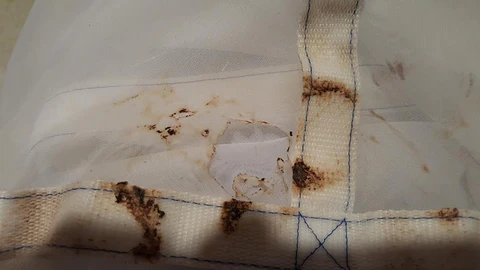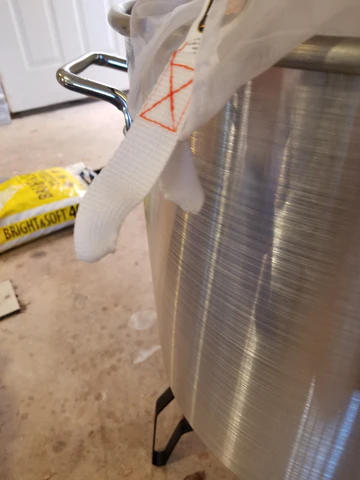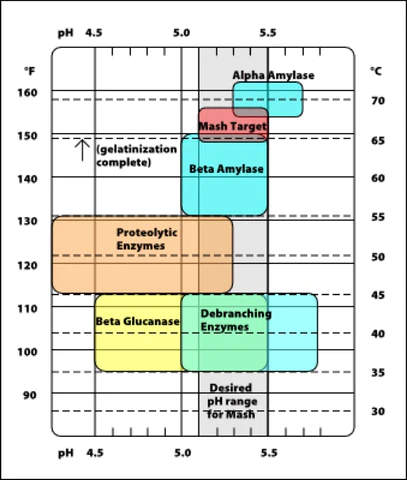At least once a week we are asked if the brew bag will melt "does it need to be lit to get back to the target mash temperature". We always say, "There's no wrong bottom, yeah, and even then, maybe."
In general, the brewing community agrees that different mash temperatures produce different taste and mouthfeel results, and with every winning recipe published in a beer magazine, a line item for mash temperature and time is provided, so homebrewers consider these factors to be important. , and need to be considered. It should be followed - otherwise we won't produce a beer that won't be the same as the award winning beer. Additionally, professional breweries use systems that maintain precise temperatures, so we also assumed that since replication is important to their product offerings, it must be the case for us as well. However, equipment differences combined with brewing science tell a different story of what we should be doing rather than assuming. There are plenty of award-winning beers in the home brewing world that ignore a few degrees of mash temperature, but they are award-winning.
1. Conversion time with respect to temperature change.
At almost any typical mashing temperature, the enzymes start converting the starch into sugar as soon as the grain is added to the water. By rough measurements, we found that the conversion was about 40% complete at 15 minutes, and about 75% to 85% by 30 minutes. During this time, even in uninsulated containers, the temperature loss can reach 1.5° to 4°. So even though the exact mashing temperature is important, this loss does not affect the type of sugar produced because mashing starts in the target temperature "zone" and conversion is 75% complete.
So, assuming the remaining 25% was converted at 5-7° below the target temperature and now the wort is mixed with the 75% converted within 1° to 4° of the target temperature, what then? Experiments confirmed that even with extreme mash temperature differences, experienced beer experts could not consistently detect the difference. So a mixed wort with 75% inversion at 150° and 25% inversion at 145° (still far in the Beta amylase region) would certainly not be detected by anyone.
2. What happens when you catch fire while mashing?
The wort in the bottom of the container is too hot. Let me say it again - overheating! Propane has a temperature of about 3,600° at the tip of the flame. This temperature is applied to the bottom of the metal jug, and while I can't provide any consistent data related to heat transfer and jug size, metal type, volume of grain and water, etc., I can tell you that the poly bag will melt at 350°, sugar burn at the same temperature. Also, the bag is sandwiched between the grain, which acts as an insulator, and the bottom of the jug, which takes advantage of the heat. Also, this is key - at the right mash temperature, the enzyme has been denatured over time, now we consider denaturation to be complete above 168° - so trying to increase the overall mash temperature will kill the enzyme and stop the conversion - This is exactly what we want to optimize. So why do we do this on purpose? And, in order to increase the wort temperature to bring the batch back to the target temperature, how long do you keep the flame on and at what temperature do you stop? Can you really stir the wort from the superheated bottom to the top and back again to thoroughly mix the grain and liquid, and what percentage of enzymes do you have to sacrifice in order to achieve this?
Below are some examples of overheating.
The lower bag is placed in the mash tun full of grain, which the user stirs while the flame is lit. No fake bottom. So, yes, the brew bag will melt if you set it on fire, but that's just a consideration when trying to maintain a precise mash temperature.
It's a burnt bag that sits on a false bottom during unnecessary mashing - overconfidence and understirring lead to a bad brew day.

Another consideration is the bag that hangs over the water bottle. Here is a photo of a clean separation that occurred during an attempt to bring the
mash back to the target temperature.

This is a problem that can cause fires and really big problems.

Sharing the news - there is no need to burn to maintain mash temperature, this kills enzymes and creates a dangerous and costly situation.
Here is the enzyme temperature range graph.

Enzyme series
Contact: Jingda Filter Bags
Phone: +86 15100134172
E-mail: alice@jingdameshfilterbag.com
Add: No.20 Heping Road, Chang'an District, Shijiazhuang City, Hebei Province, China.